A well-organized refrigerator transforms your daily kitchen routine into a smooth, efficient experience. When everything has its designated place, you spend less time searching for ingredients and more time enjoying cooking. The key to successful refrigerator organization lies in understanding your family's eating habits and creating systems that actually work for your lifestyle. Smart storage solutions not only help preserve food freshness longer but also prevent costly waste from forgotten items hiding in the back corners. Whether you're dealing with a compact apartment fridge or a spacious family-sized model, the right organization approach makes every inch count. These practical ideas will help you create a refrigerator that stays tidy, keeps food fresh, and makes meal preparation more enjoyable. From clever storage containers to strategic placement techniques, you'll discover how small changes can make a huge difference in your kitchen's functionality and your family's daily routine.
1. Clear Storage Bin Systems
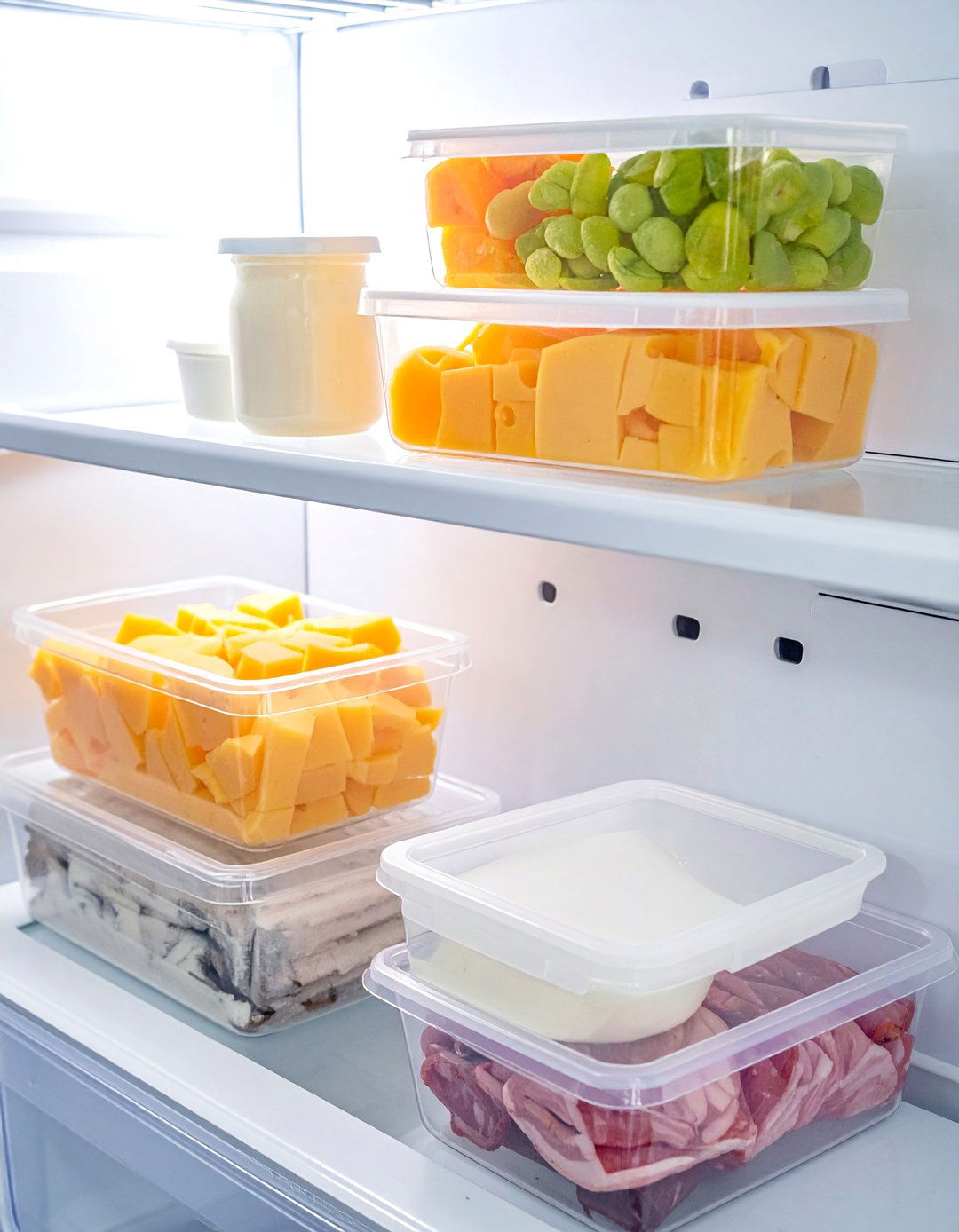
Clear storage bins create instant organization by grouping similar items together while keeping everything visible at a glance. You can designate separate bins for different food categories like yogurts, cheese, deli meats, or snack items. The transparent walls make it easy to spot what you need without rummaging through containers, and the sturdy construction keeps everything contained even when the refrigerator door gets bumped. Choose bins with comfortable handles so you can easily pull them out to access items in the back. This system works particularly well for busy families where multiple people access the refrigerator throughout the day. Stack bins vertically to maximize space, and consider different sizes to accommodate various food items. Have you ever spent precious morning minutes searching for your favorite yogurt while rushing to work?
2. Rotating Lazy Susan Solutions
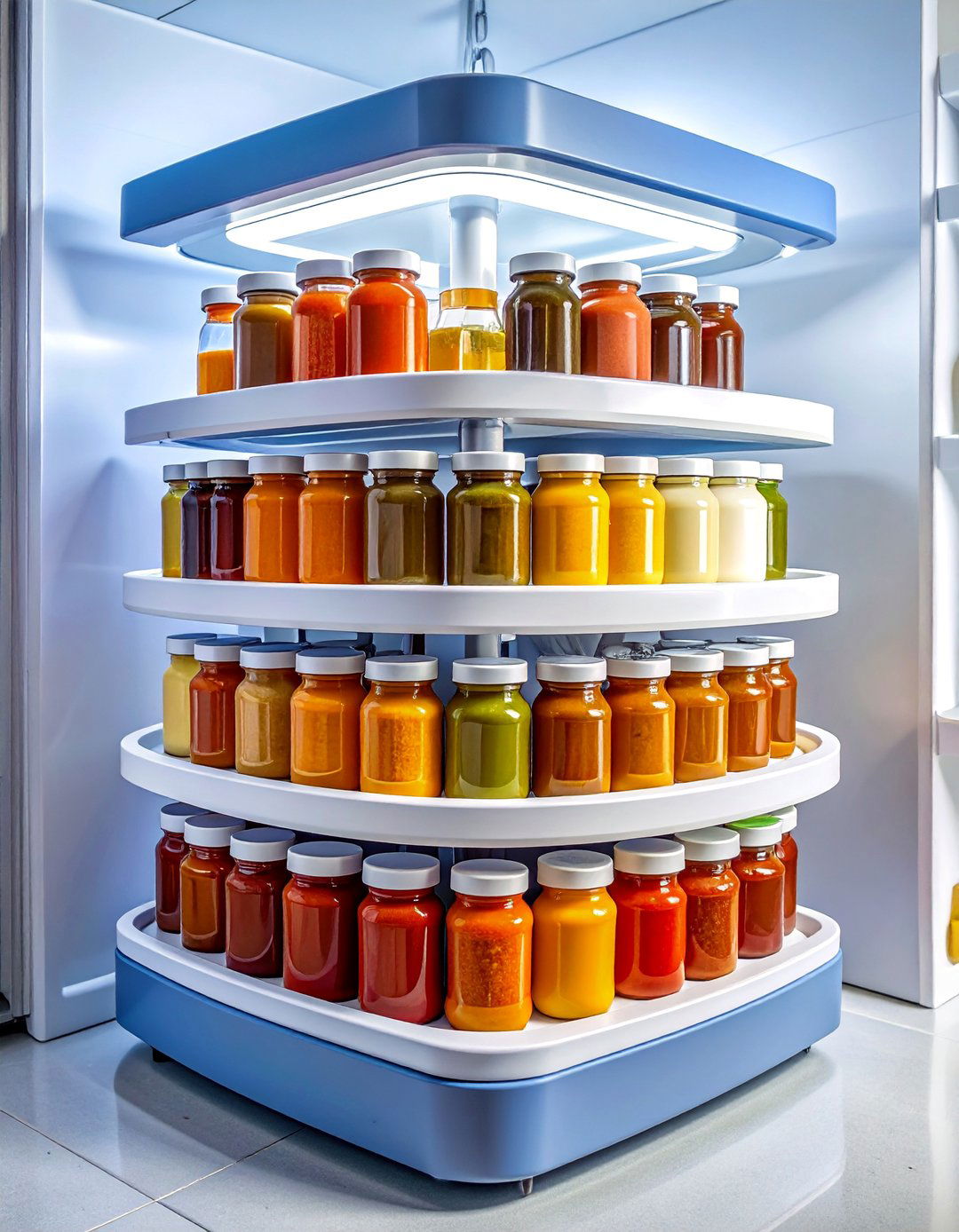
Lazy susans revolutionize refrigerator storage by bringing items from the back to the front with a simple spin. Rectangular designs work better than round ones in most refrigerators because they maximize the available shelf space without leaving unused corners. Place condiments, small jars, and bottles on the rotating platform so nothing gets forgotten behind taller items. The smooth rotation mechanism allows even children to access items on upper shelves safely. Modern lazy susans come with non-slip surfaces and suction cups to stay securely in place. You can use multiple smaller units on different shelves or one larger unit for maximum storage. This solution works especially well for condiment collections that tend to multiply over time. Why struggle to reach items in the back when a quick spin brings everything within easy reach?
3. Produce Preservation Containers
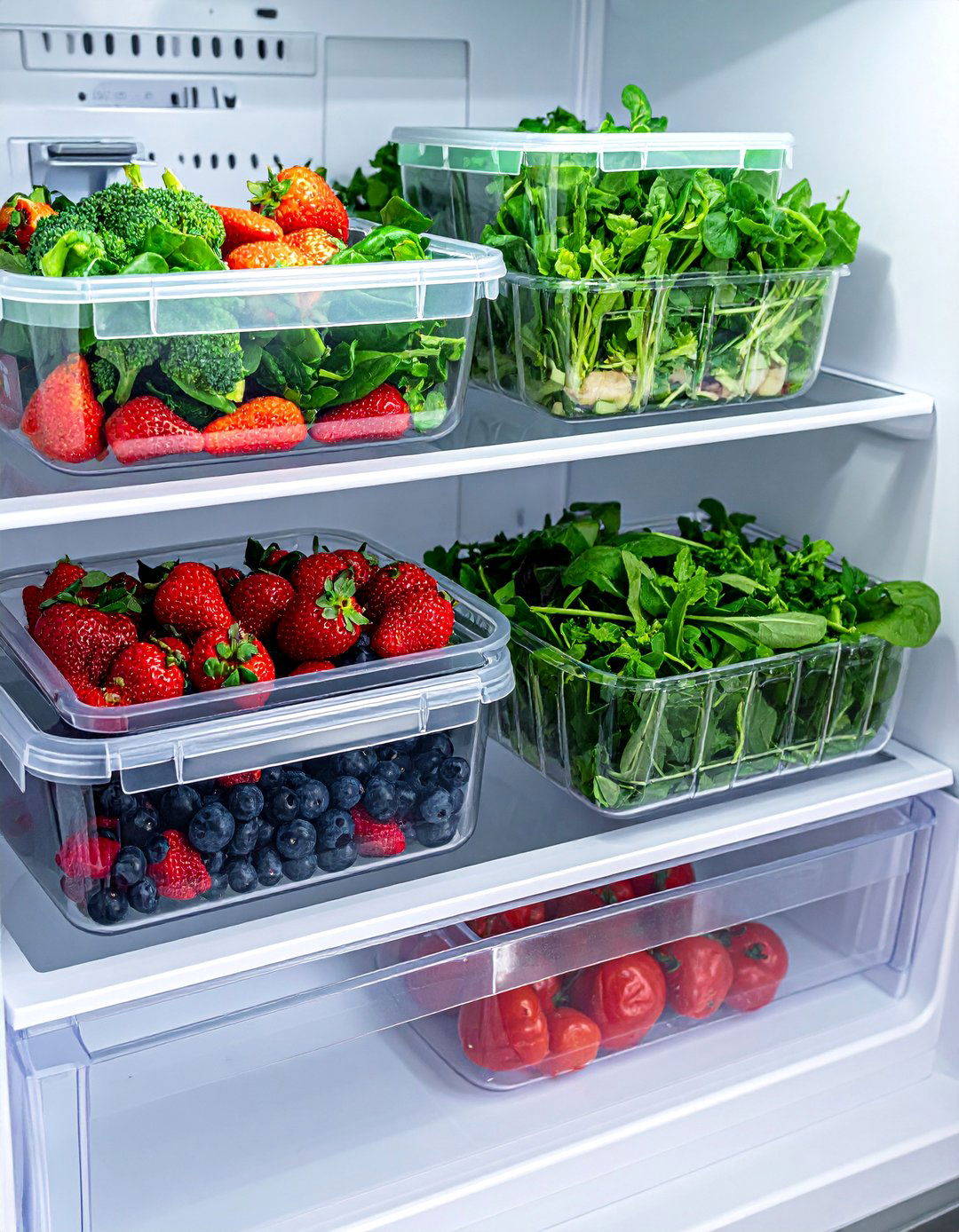
Specialized produce containers extend the life of fruits and vegetables by controlling airflow and moisture levels. These containers feature ventilation systems and elevated trays that keep produce away from excess moisture while allowing proper air circulation. Different containers work best for different types of produce - berries need different conditions than leafy greens. The clear construction lets you monitor freshness without opening containers unnecessarily. Many systems include removable colanders for easy washing and draining. Stackable designs help you organize different types of produce efficiently while saving valuable refrigerator real estate. You can wash and prep produce when you bring it home, then store it properly for the week ahead. Investing in quality produce storage pays for itself by reducing food waste and extending freshness. Would you rather throw away expensive berries or enjoy them fresh for over a week?
4. Rolling Egg Storage Systems
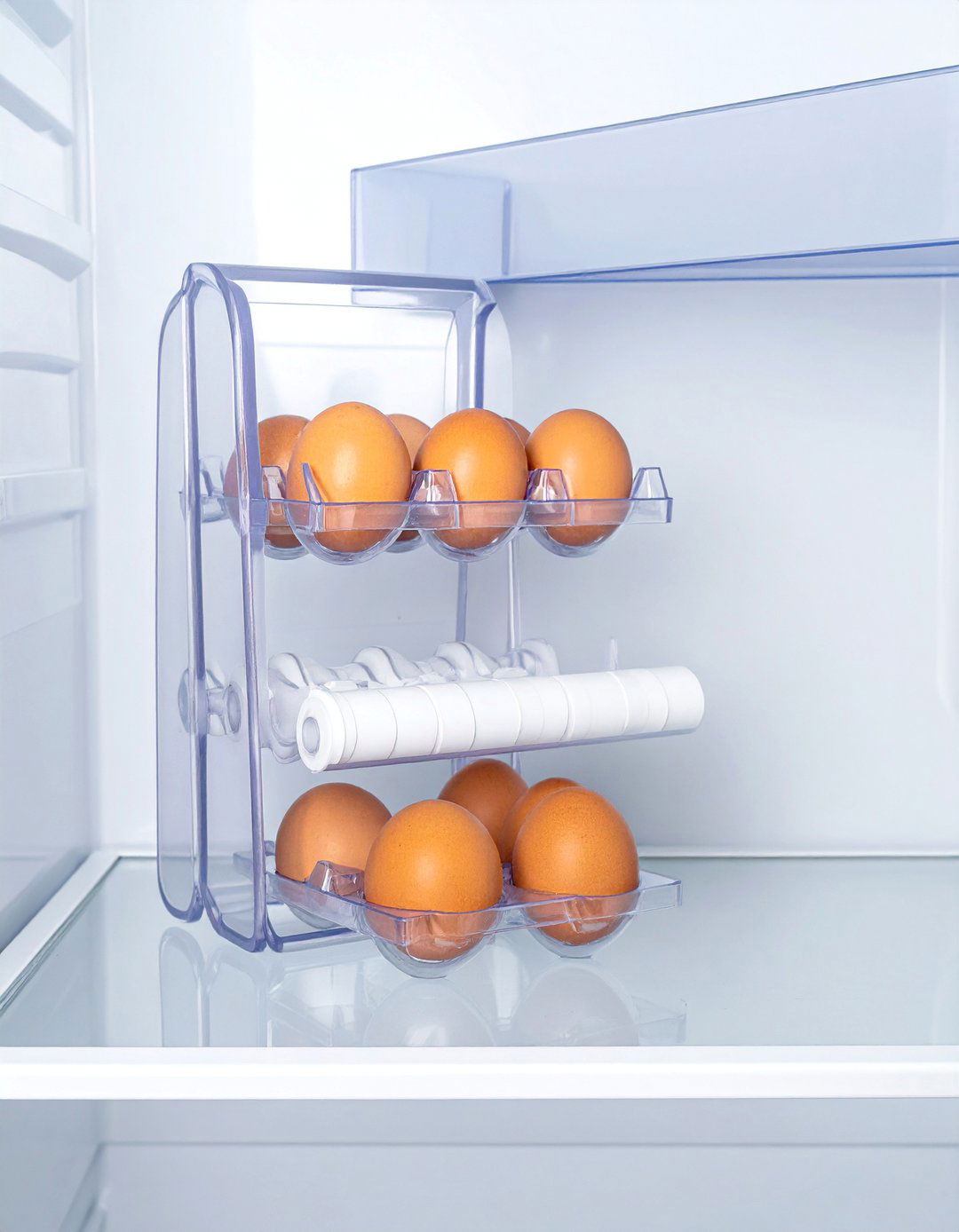
Rolling egg dispensers provide convenient access to fresh eggs while protecting them from damage and contamination. These gravity-fed systems automatically move the next egg forward when you take one, ensuring you always use the oldest eggs first. The enclosed design protects eggs from absorbing refrigerator odors and prevents accidental breakage from other items. Many rolling systems stack to accommodate large egg purchases or families that use many eggs. Clear construction lets you monitor your egg supply without opening the container. The smooth rolling mechanism works reliably even when the refrigerator gets jostled. Some models include date tracking systems to help monitor freshness. This approach is much more space-efficient than keeping eggs in their original cartons. Have you ever accidentally cracked eggs while trying to retrieve something from behind them in your refrigerator?
5. Temperature Zone Organization
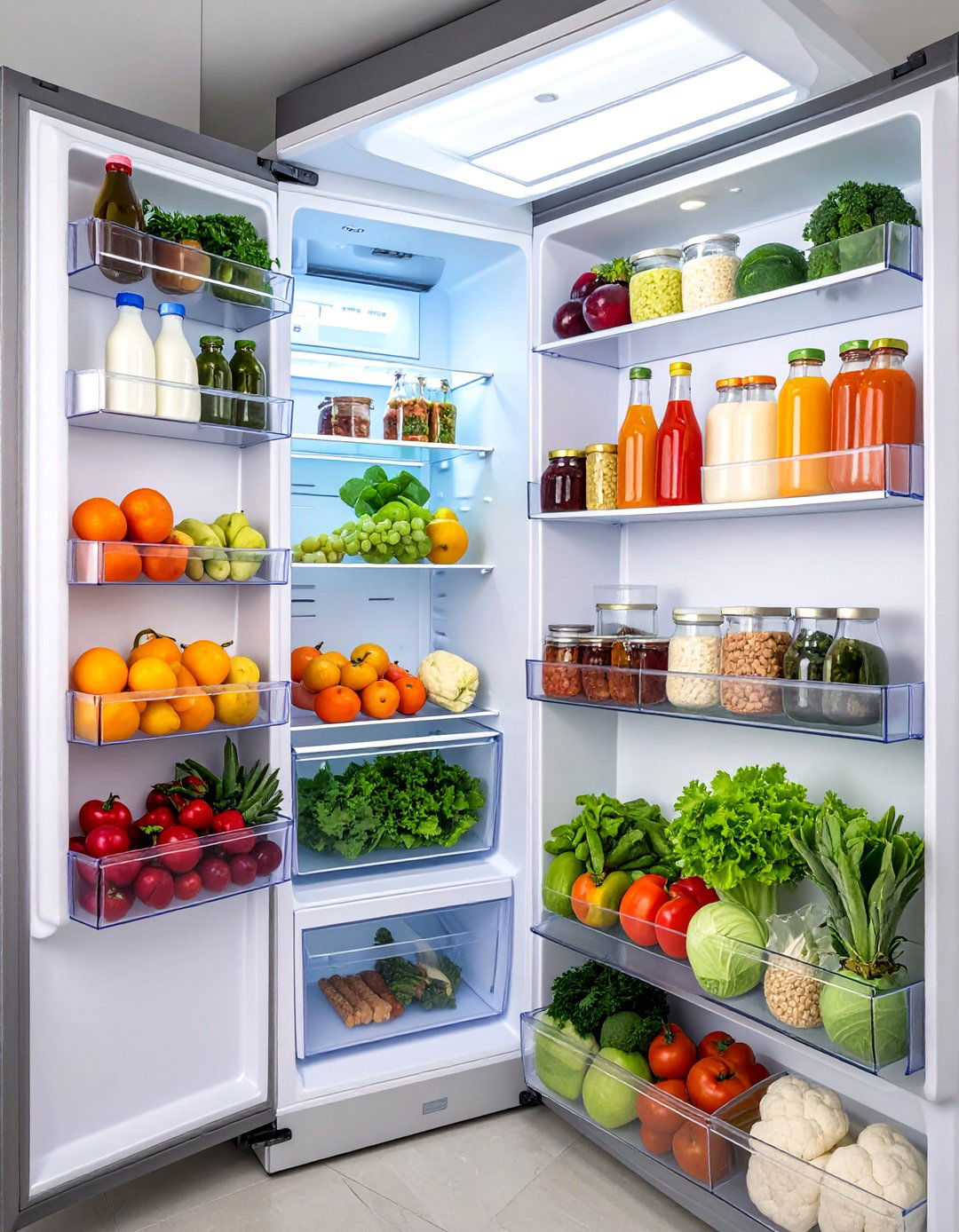
Understanding your refrigerator's natural temperature zones helps you store food in optimal conditions for maximum freshness and safety. The top shelves stay warmer and work best for ready-to-eat foods like leftovers, drinks, and dairy products. Middle shelves maintain consistent temperatures perfect for eggs and prepared foods. Lower shelves offer the coldest storage ideal for raw meat and fish. Door compartments experience the most temperature fluctuation, making them suitable only for condiments and items that don't require constant cold. Produce drawers maintain specific humidity levels designed for fruits and vegetables. By respecting these natural zones, your food stays fresher longer and you reduce the risk of foodborne illness. Store raw meat in containers on the bottom shelf to prevent drips from contaminating other foods. Does your family know which foods belong on which refrigerator shelves for optimal storage?
6. Stackable Container Systems
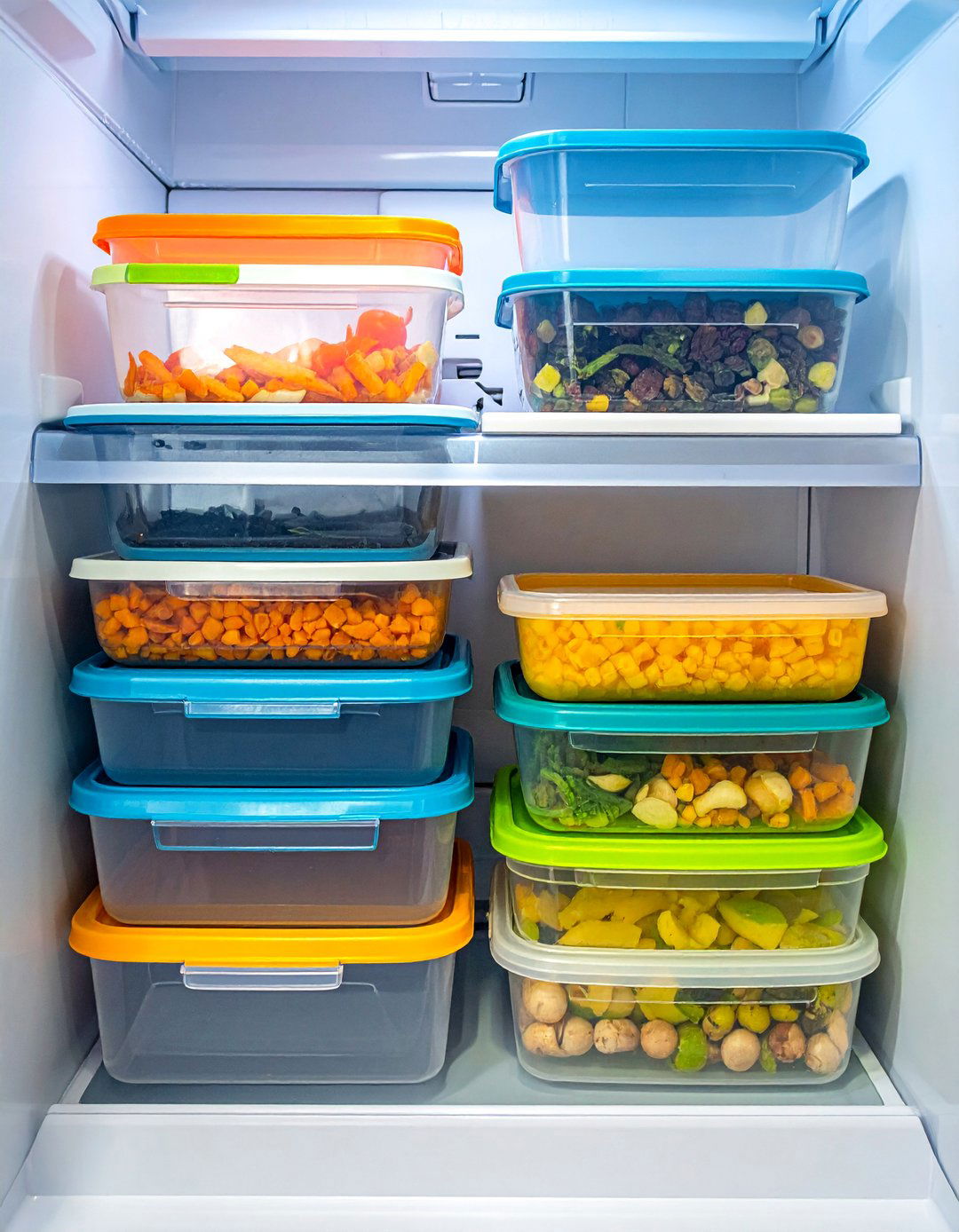
Stackable containers maximize vertical space while creating uniform, organized storage throughout your refrigerator. Choose containers with the same footprint so they nest perfectly, creating tower systems that use space efficiently. Clear materials let you see contents without unstacking, while secure lids prevent spills and cross-contamination. These systems work particularly well for meal prep, leftover storage, and organizing small items that tend to scatter. Modular designs allow you to adjust your storage as needs change. Look for containers that stack securely without wobbling or sliding. Different sizes accommodate everything from individual portions to family-sized meals. The uniform appearance creates a clean, organized look that makes your refrigerator feel more spacious. Label containers clearly so family members can maintain the organization system. Why settle for mismatched containers when a coordinated system can transform your refrigerator storage?
7. Drawer Insert Dividers
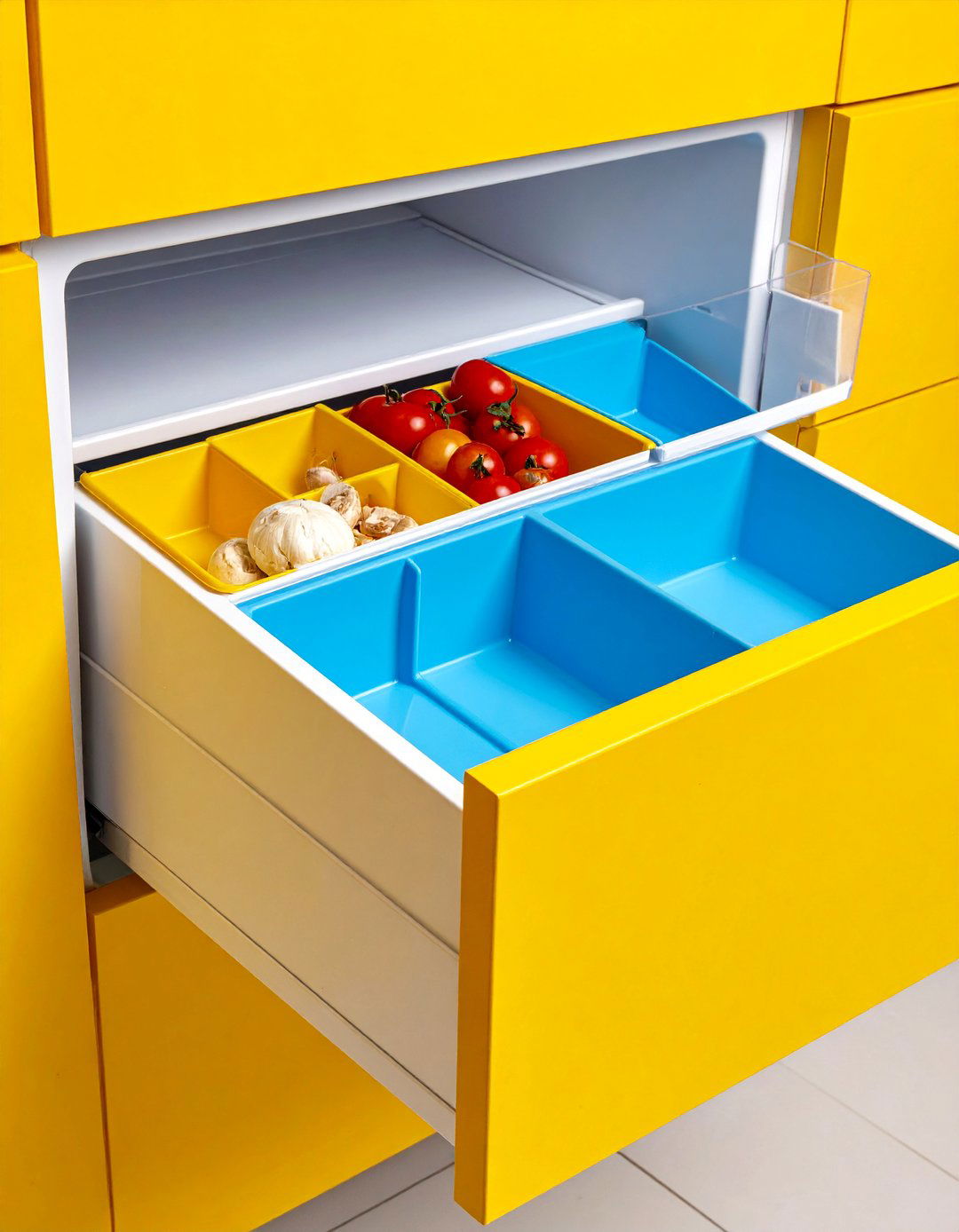
Drawer dividers transform wide refrigerator drawers into organized compartments that prevent small items from getting lost or damaged. Adjustable dividers let you create custom-sized sections for different foods like berries, small vegetables, or cheese portions. These inserts typically feature raised edges that contain spills and prevent items from sliding around when drawers open and close. Many systems include removable sections for easy cleaning and flexible reorganization. The compartments help separate foods that shouldn't touch, like raw meat from ready-to-eat items. You can create dedicated spaces for grab-and-go snacks that children can easily access. Some dividers include ventilation features to maintain proper airflow around produce. This system works especially well in deep drawers where items tend to pile up and get forgotten. How much time do you spend digging through cluttered drawers to find what you need?
8. Magnetic Storage Accessories
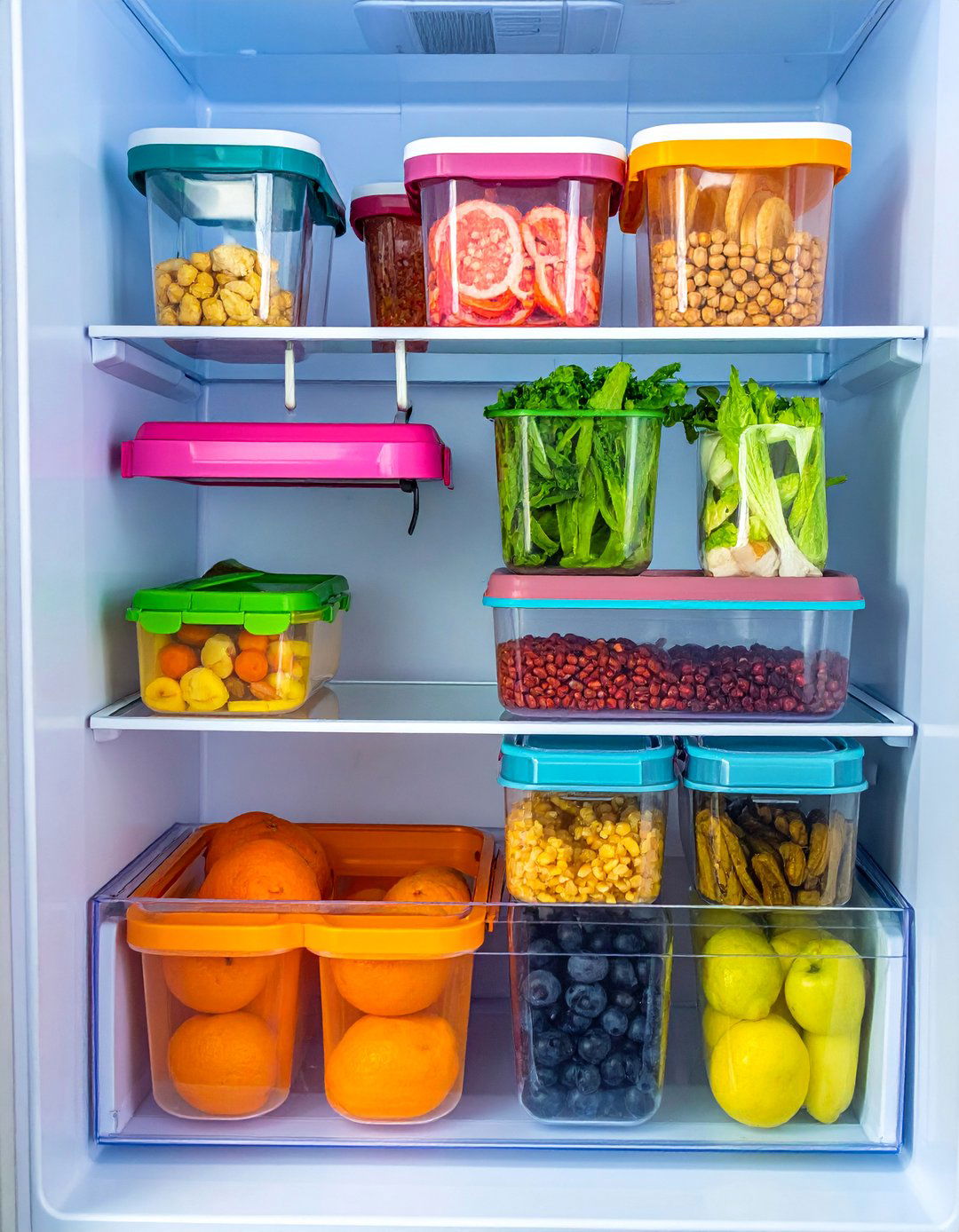
Magnetic organizers attach to refrigerator sides and interior walls to create additional storage without taking up shelf space. Small magnetic containers work perfectly for storing frequently used items like herbs, spice packets, or small condiment containers. Magnetic hooks hold reusable bags, kitchen towels, or lightweight utensils. Some magnetic systems include whiteboards for meal planning or grocery lists. The removable nature of magnetic accessories makes them easy to relocate as your needs change. Strong magnets ensure accessories stay securely attached even when the refrigerator door closes firmly. You can create vertical storage solutions on typically unused wall space. These accessories work particularly well in smaller refrigerators where every inch counts. Choose magnetic containers with clear fronts so you can easily identify contents. Have you considered using your refrigerator's magnetic surfaces for more than just holding family photos and shopping lists?
9. Shelf Liner Protection Systems
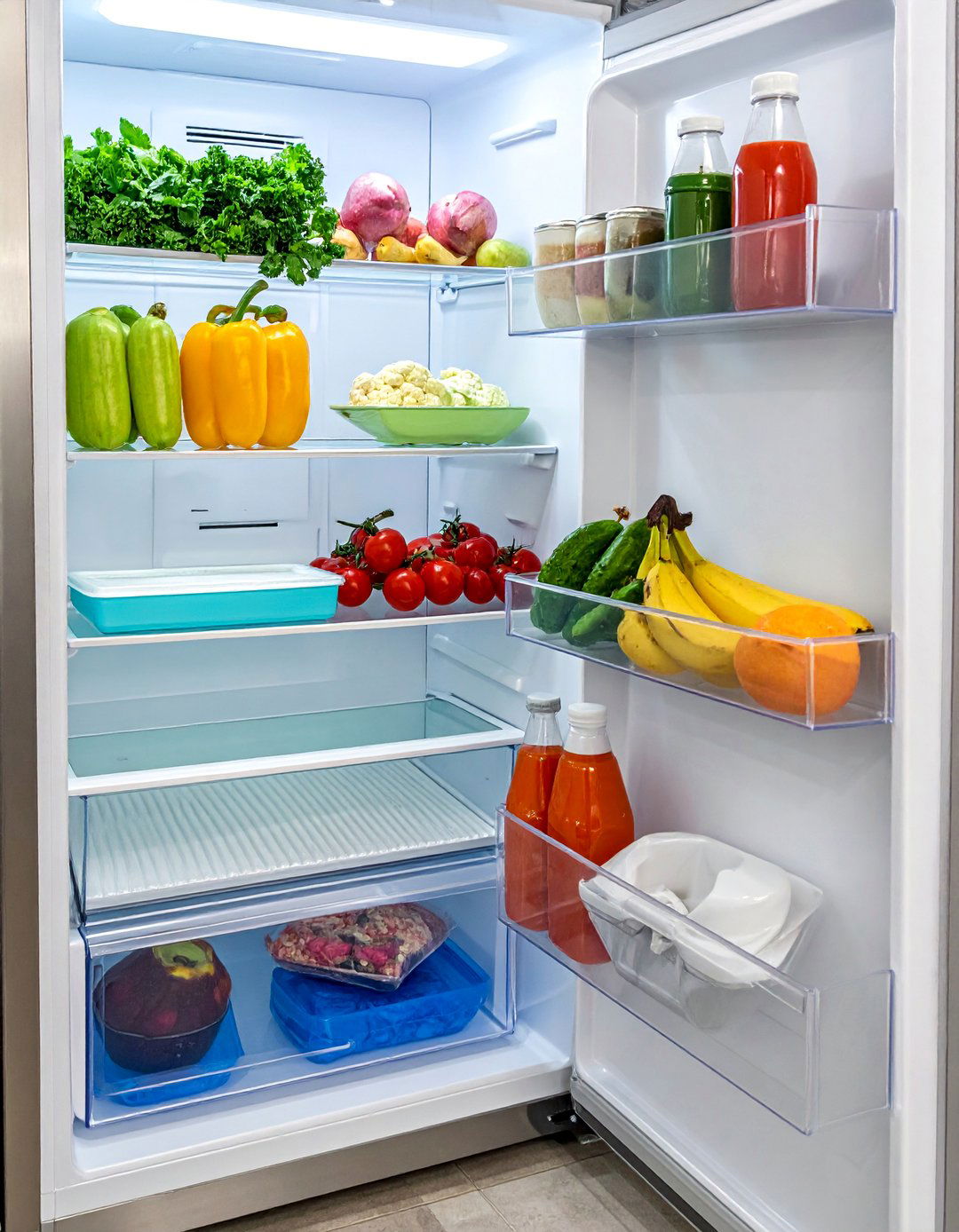
Installing shelf liners creates easy-to-clean surfaces that protect refrigerator shelves while containing spills and drips. Ribbed liners allow air circulation while catching liquids before they spread throughout the refrigerator. Removable liners make deep cleaning simple - just lift them out, wash, and replace. Some liner systems include antimicrobial properties that help prevent bacterial growth and odors. Custom-cut liners fit precisely in your refrigerator's dimensions for a professional appearance. Waterproof materials resist staining and won't absorb food odors over time. This protection is especially important on lower shelves where raw meat might drip. You can use different colored liners to create visual zones for different food categories. The initial investment in quality liners saves time and effort in long-term refrigerator maintenance. Why spend time scrubbing sticky spills from refrigerator shelves when liners make cleanup effortless?
10. Beverage Organization Stations
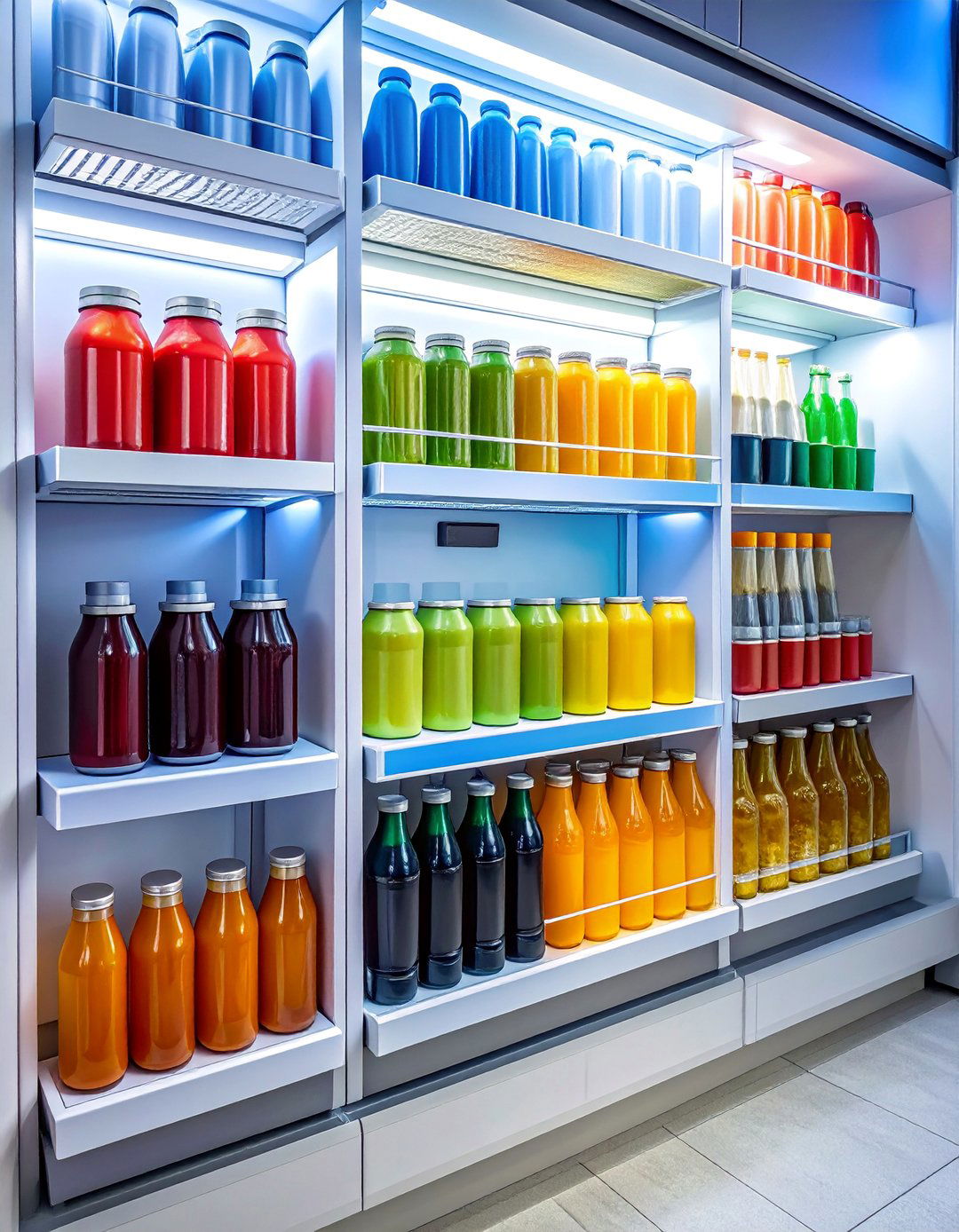
Dedicated beverage storage keeps drinks organized and easily accessible for all family members. Can dispensers create neat rows that automatically move the next drink forward when one is removed. Water bottle holders prevent round bottles from rolling around and taking up excessive space. Juice box organizers keep children's drinks at an accessible height while maintaining order. Some systems include built-in handles for easy restocking and cleaning. Stackable designs accommodate different container sizes from soda cans to large water bottles. The organized appearance makes it easy to monitor inventory and know when to restock favorites. You can create separate sections for different family members or different types of beverages. This system prevents drinks from getting buried behind other items and forgotten. How often do you discover drinks that have been pushed to the back and forgotten about until they expire?
11. Meal Prep Container Organization
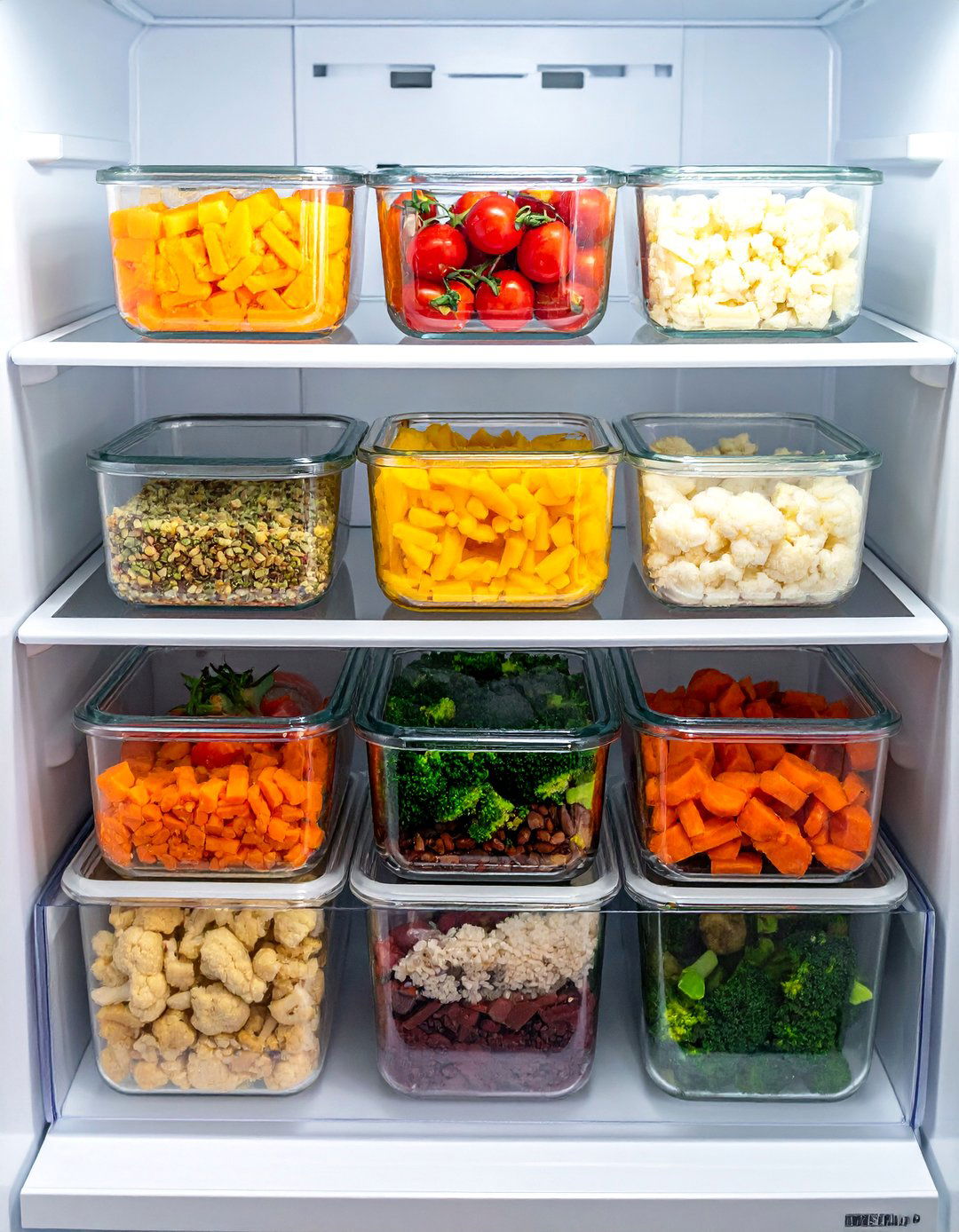
Organized meal prep storage encourages healthy eating habits while streamlining weekly food preparation. Use uniform containers that stack efficiently and fit your refrigerator's dimensions perfectly. Glass containers offer durability and don't retain food odors or stains like plastic alternatives. Create dedicated zones for different days of the week or different family members. Label containers clearly with contents and dates to prevent confusion and ensure food safety. Choose containers with secure, leak-proof lids that prevent spills during transport. Some meal prep systems include portion-control features to support health goals. Stack containers by height to maximize vertical space utilization. This organization method works especially well for busy families who need grab-and-go options throughout the week. Preparing meals in advance becomes much more manageable when you have an organized storage system. Does your current meal prep routine help or hinder your weekly planning efforts?
12. Condiment Door Management
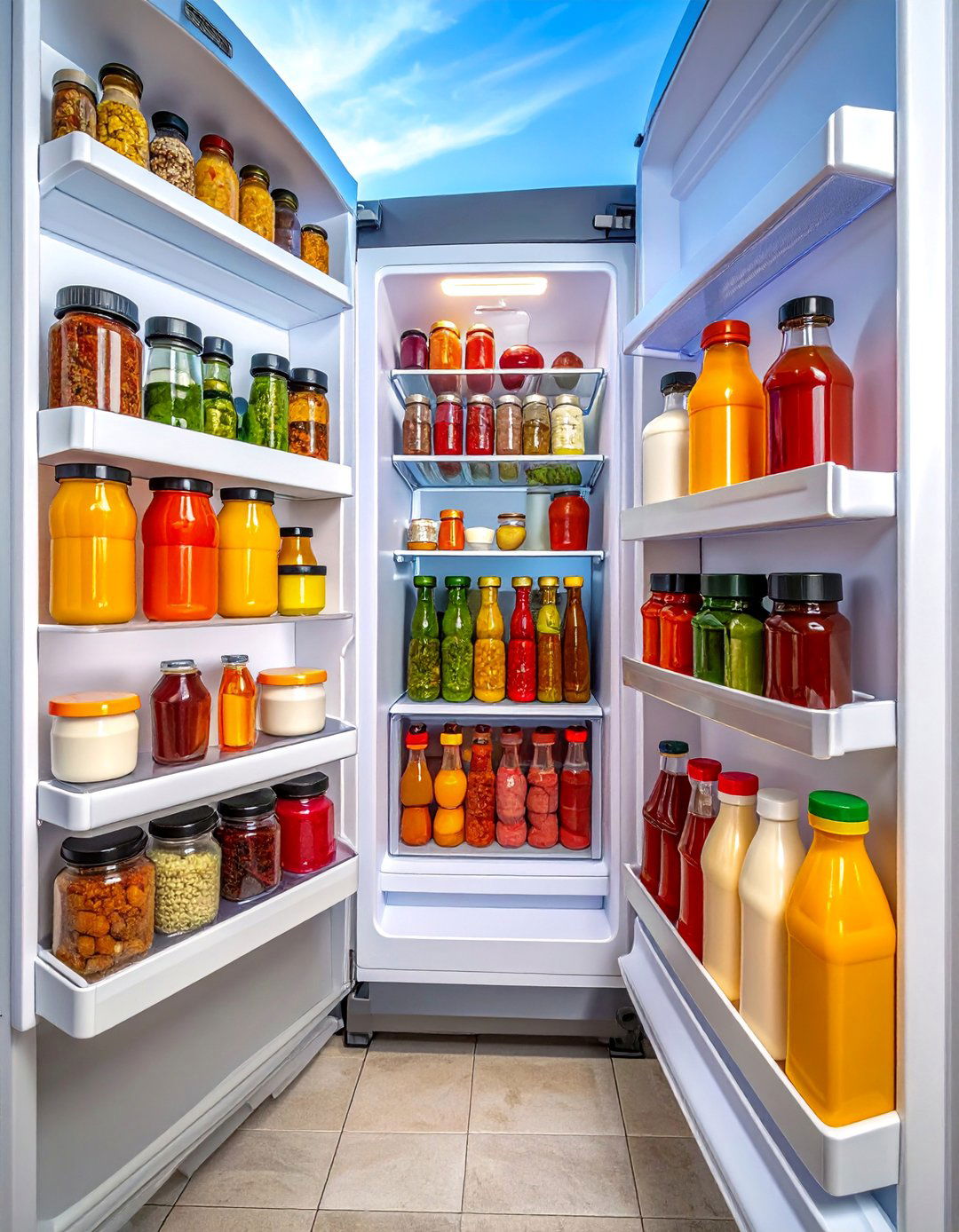
Transform refrigerator door storage into an organized condiment station that keeps frequently used items within easy reach. Use tiered racks to create multiple levels of storage in the same space. Group similar condiments together - all salad dressings in one section, hot sauces in another. Clear bins contain smaller bottles and prevent them from falling over when the door opens and closes. Adjust shelf heights to accommodate tall bottles without wasting vertical space. Some door organizers include clip-on bins that hang from existing shelves. Consider turntables for door shelves to access items in the back easily. This organization prevents condiment collections from becoming cluttered messes where items get lost and forgotten. Regular rotation ensures older items get used before newer ones. Why let valuable condiments expire in door clutter when simple organization keeps everything visible and accessible?
13. Leftover Identification Systems
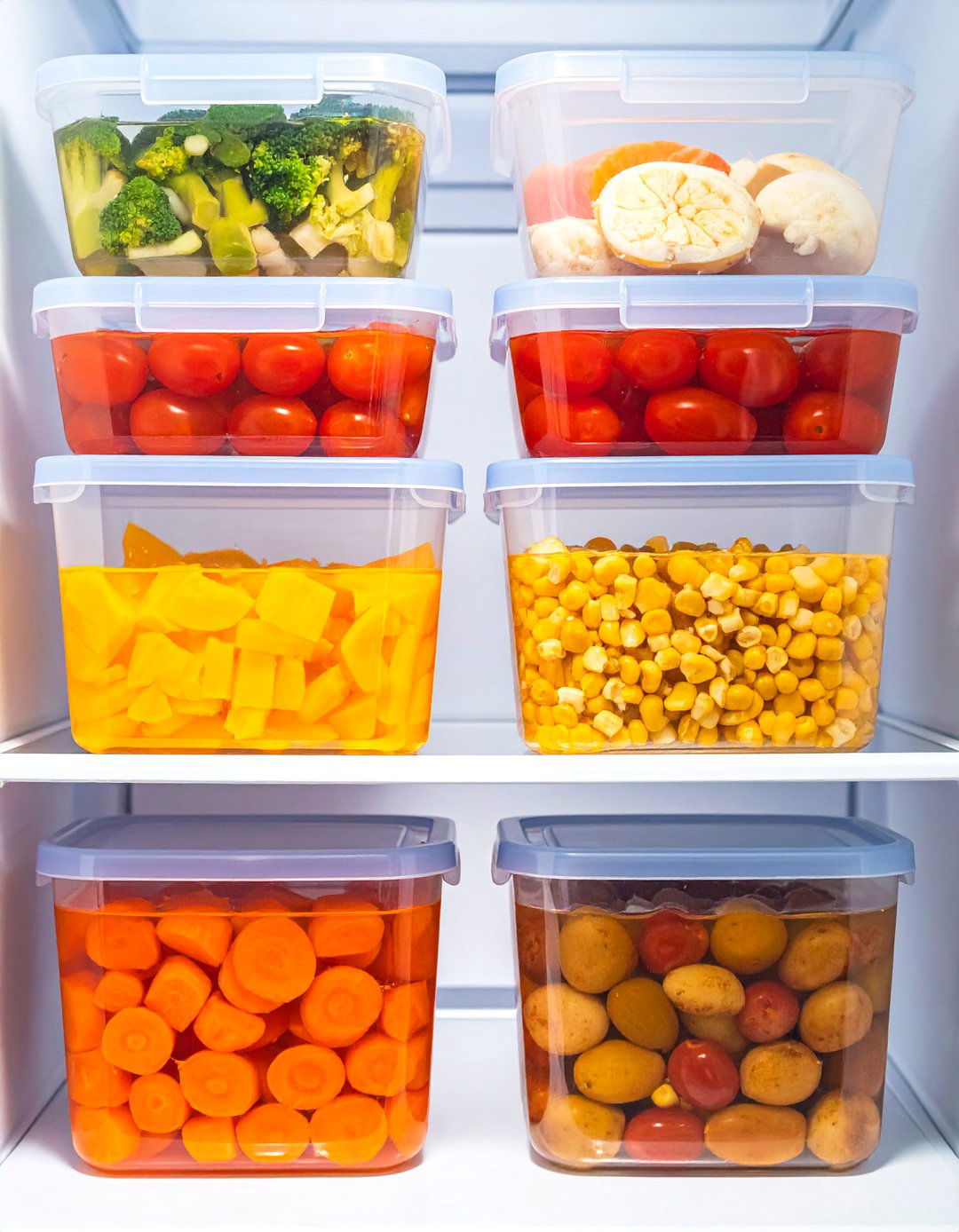
Implementing a clear leftover labeling system prevents food waste and ensures food safety throughout your household. Use erasable labels that can be rewritten multiple times, or dissolvable labels that wash away completely in water. Include both contents and date information so everyone knows what they're looking at and how fresh it is. Color-coded systems can indicate different family members' meals or different types of food. Some families use dry-erase markers directly on glass containers for quick identification. Create a rotation system where older leftovers move to the front and newer ones go to the back. This organization helps prevent the science experiments that develop when food gets forgotten. Simple identification saves money by ensuring expensive ingredients don't go to waste. Have you ever opened a mystery container only to find something unrecognizable that used to be dinner?
14. Vertical Produce Storage
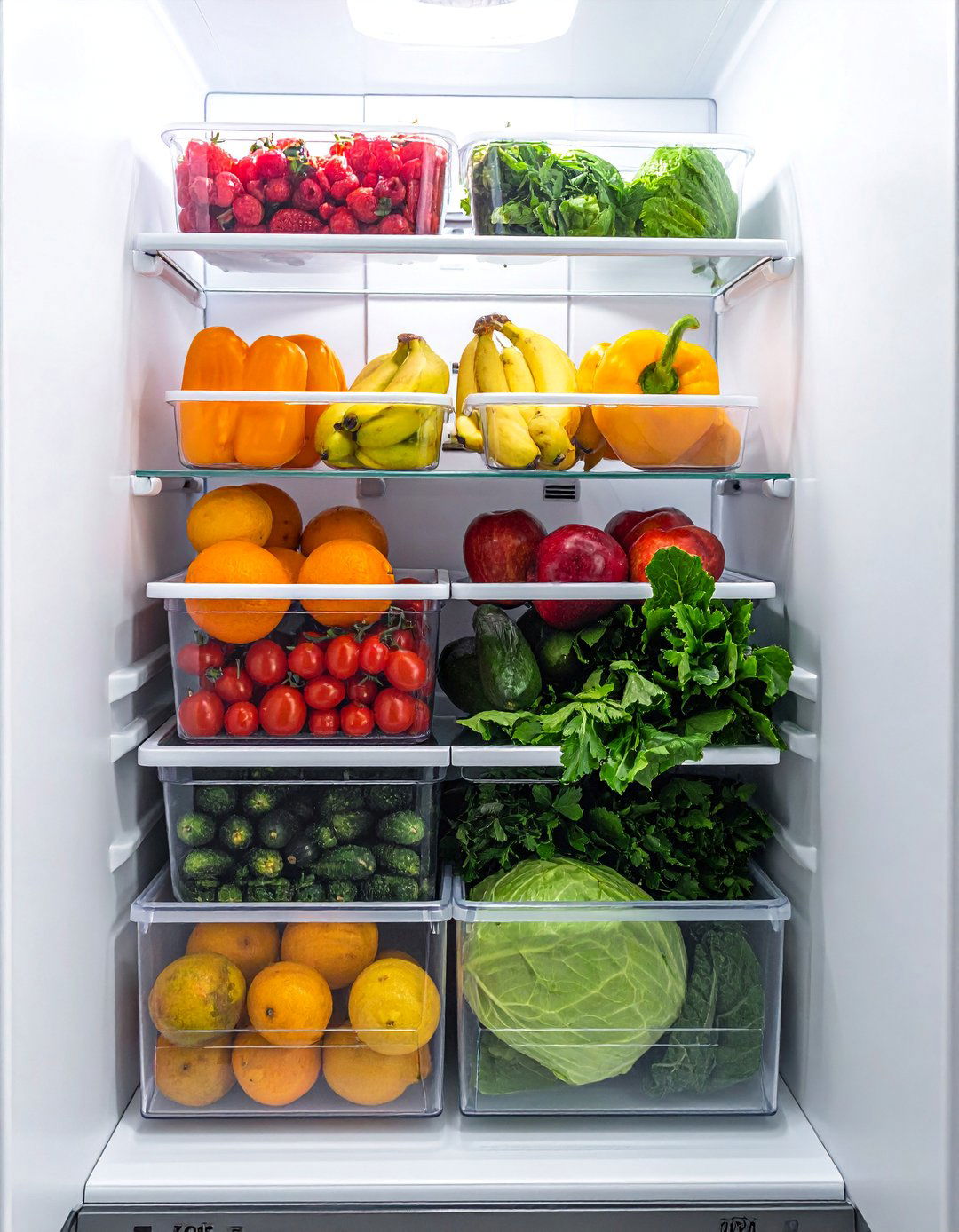
Vertical storage solutions maximize refrigerator space while keeping fruits and vegetables organized and accessible. Use tiered produce baskets that allow air circulation around delicate items. Create separate zones for different types of produce based on their storage requirements. Some vegetables store better upright in water, like celery and carrots, while others need horizontal storage. Stackable produce bins let you layer different fruits and vegetables without crushing delicate items. Clear containers help you monitor freshness and use older produce first. This system prevents vegetables from getting buried and forgotten in deep drawers. You can prep vegetables when you bring them home and store them in ready-to-use portions. Proper vertical organization encourages healthy snacking by making fresh produce highly visible and easily accessible. Why let expensive produce wilt in overcrowded drawers when vertical organization keeps everything fresh and visible?
15. Spill-Proof Meat Storage
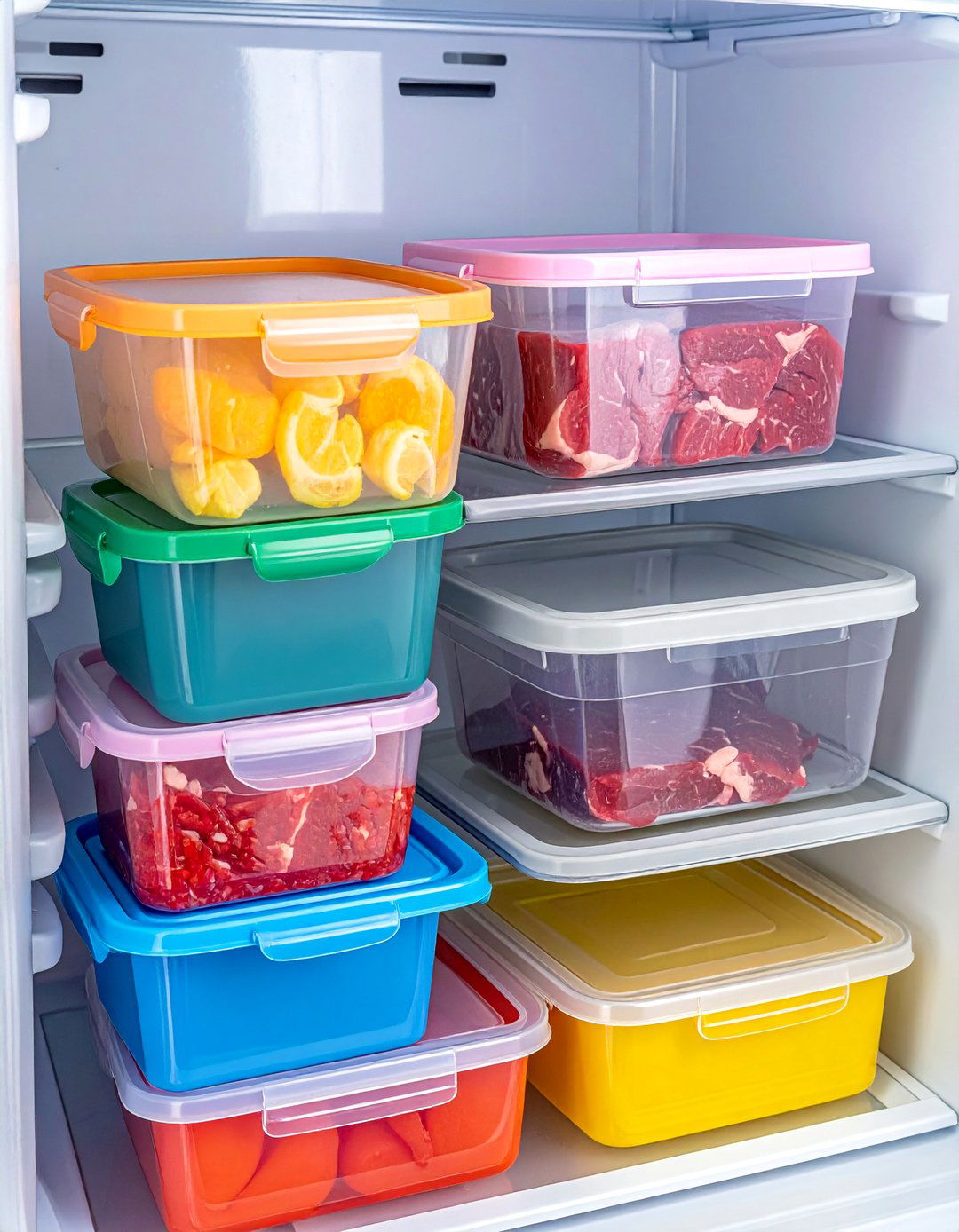
Safe meat storage requires contained systems that prevent cross-contamination while maintaining optimal temperature conditions. Use dedicated containers with secure lids specifically for raw meat and poultry storage. Place these containers on the lowest shelf where they can't drip onto other foods. Some storage systems include drainage features to keep meat from sitting in its own juices. Clear containers allow you to monitor freshness without opening and exposing the contents to temperature fluctuations. Label containers with purchase and use-by dates for food safety tracking. This organization prevents the health risks associated with improper meat storage. Easy-to-clean containers make sanitization simple and thorough. Dedicated meat storage also contains odors that might otherwise spread throughout your refrigerator. How confident are you that your current meat storage prevents contamination of other foods in your refrigerator?
16. Snack Zone Creation
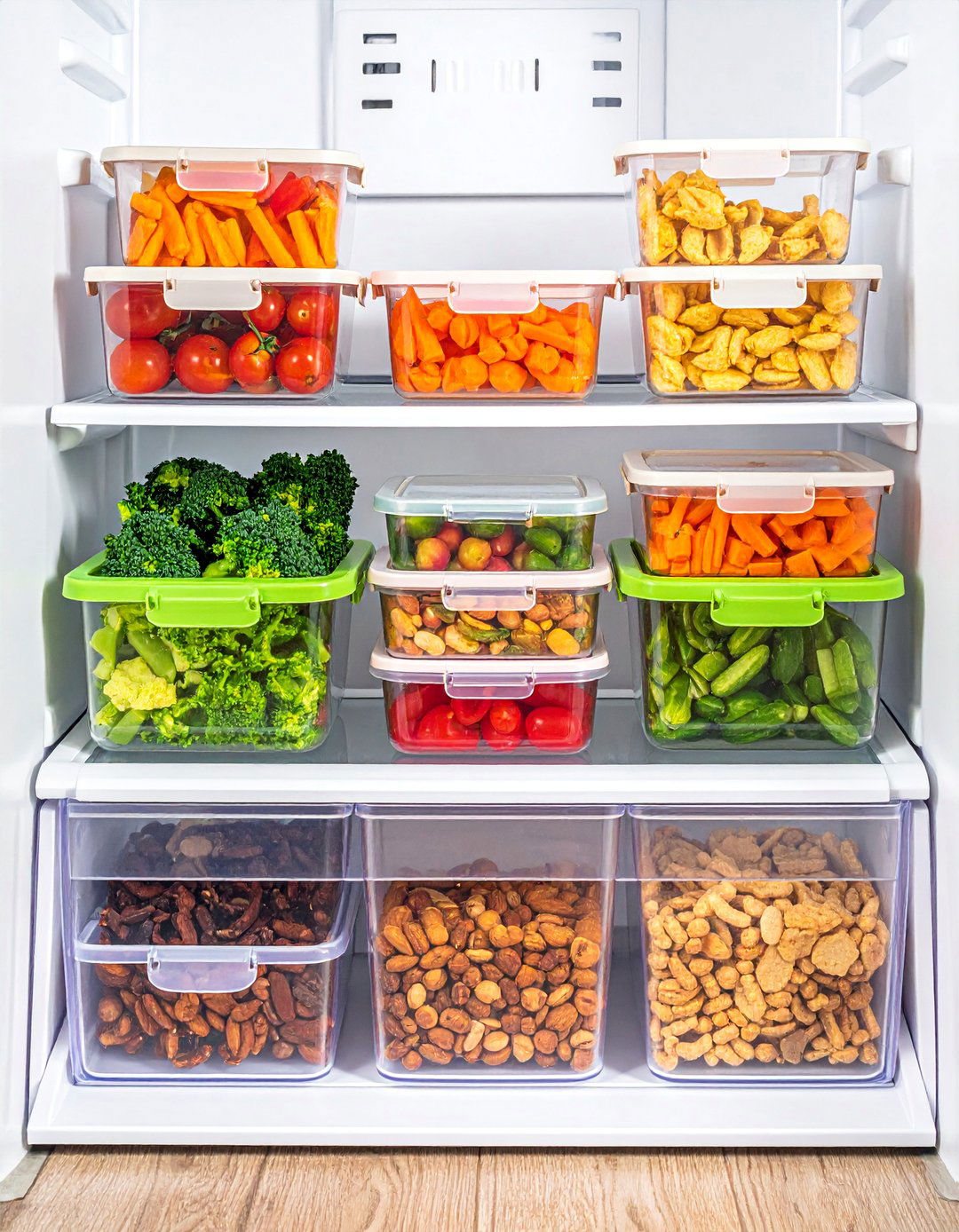
Designating specific refrigerator areas for healthy snacks encourages better eating habits while keeping grab-and-go items organized. Use clear containers at child-accessible heights filled with pre-portioned fruits, vegetables, and other approved snacks. Create separate bins for different family members or different types of snacks. This system makes it easy for children to make independent, healthy choices without parental supervision. Pre-wash and cut vegetables when you bring them home so they're ready for immediate consumption. Some families include small containers of dips or dressings to make vegetables more appealing. The visual organization helps everyone see healthy options first before reaching for less nutritious alternatives. This approach reduces the afternoon question of "what can I eat" while promoting good nutrition habits. Does your refrigerator organization encourage or discourage healthy snacking choices throughout the day?
17. Freezer Door Integration
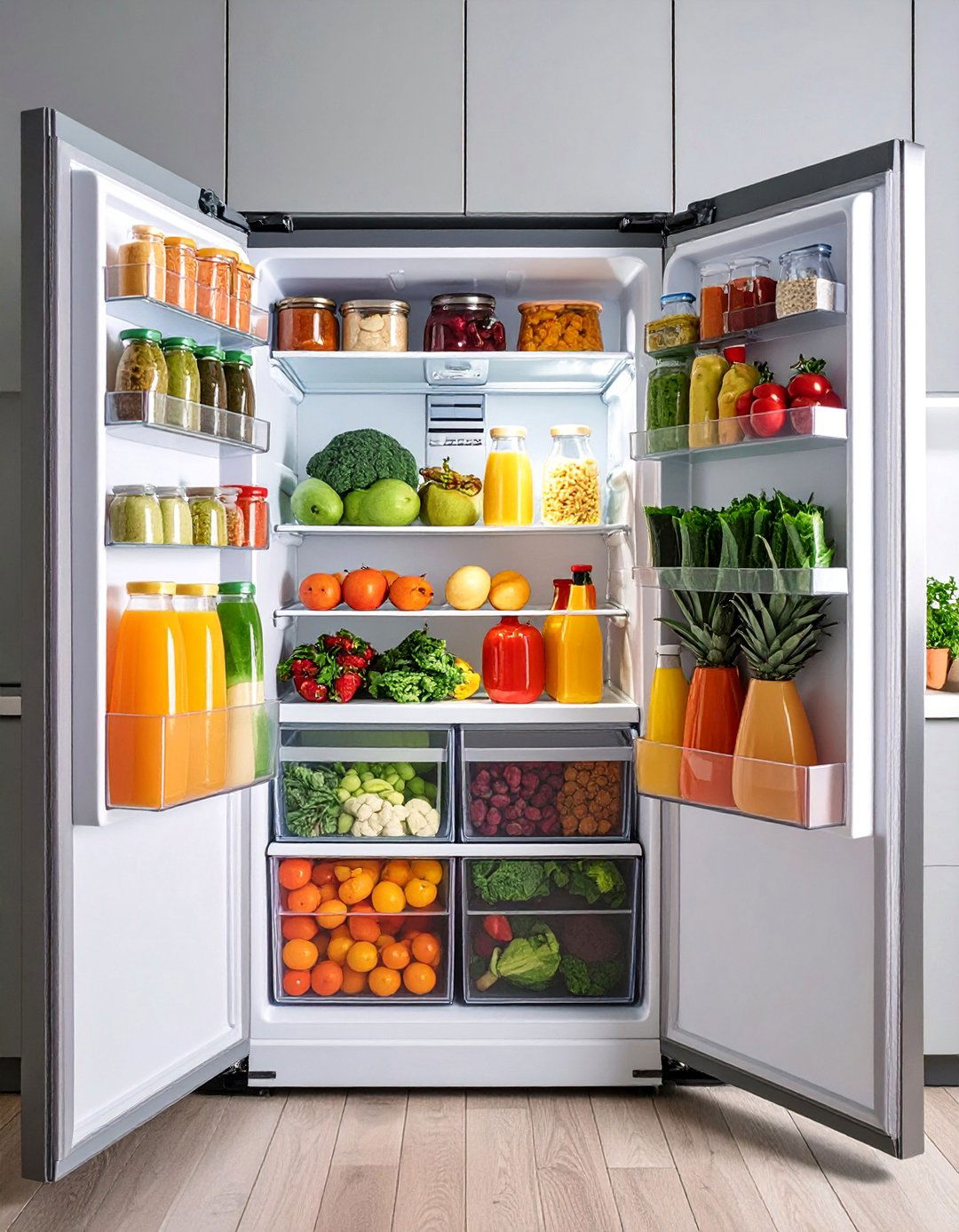
Coordinating refrigerator and freezer organization creates a seamless cold storage system throughout your kitchen. Use similar storage containers and labeling systems in both spaces for consistency. Create overflow zones where items can move between freezer and refrigerator as needed. Some containers work effectively in both environments, reducing the need for separate storage systems. Plan your organization so frequently used frozen items stay in easy-reach locations. This integration is particularly helpful for meal planning and batch cooking routines. Use the freezer door for items that won't be damaged by temperature fluctuations during door openings. Label freezer items clearly since frozen foods can be harder to identify than refrigerated ones. Consider which items you use most frequently and organize accordingly. How well do your refrigerator and freezer organization systems work together to support your family's eating patterns?
18. Fresh Herb Preservation
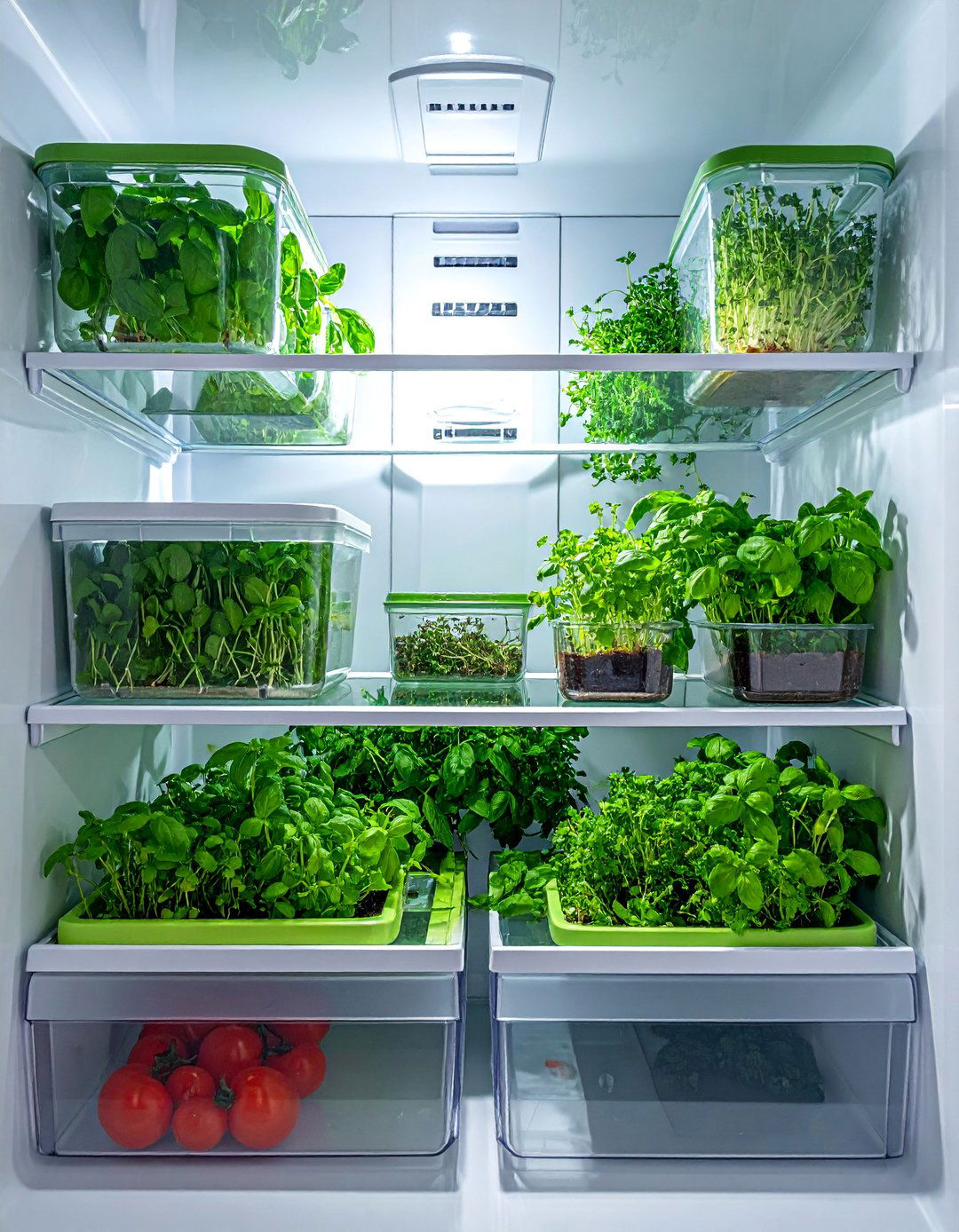
Dedicated herb storage keeps fresh herbs vibrant and flavorful much longer than traditional storage methods. Some herbs store best upright in water like flowers, while others need dry, ventilated environments. Use specialized containers that control moisture levels and provide proper air circulation. Clear storage lets you monitor herb condition without opening containers unnecessarily. This system prevents expensive fresh herbs from wilting and becoming unusable quickly. Some herb storage systems include cutting boards or prep areas for immediate use. You can wash and prep herbs when you bring them home, then store them properly for the week. Proper herb organization encourages using fresh herbs in cooking rather than letting them go to waste. The investment in quality herb storage pays for itself by extending usability and enhancing meal flavors. How often do you throw away expensive fresh herbs because they wilted before you could use them?
19. Dairy Product Zones
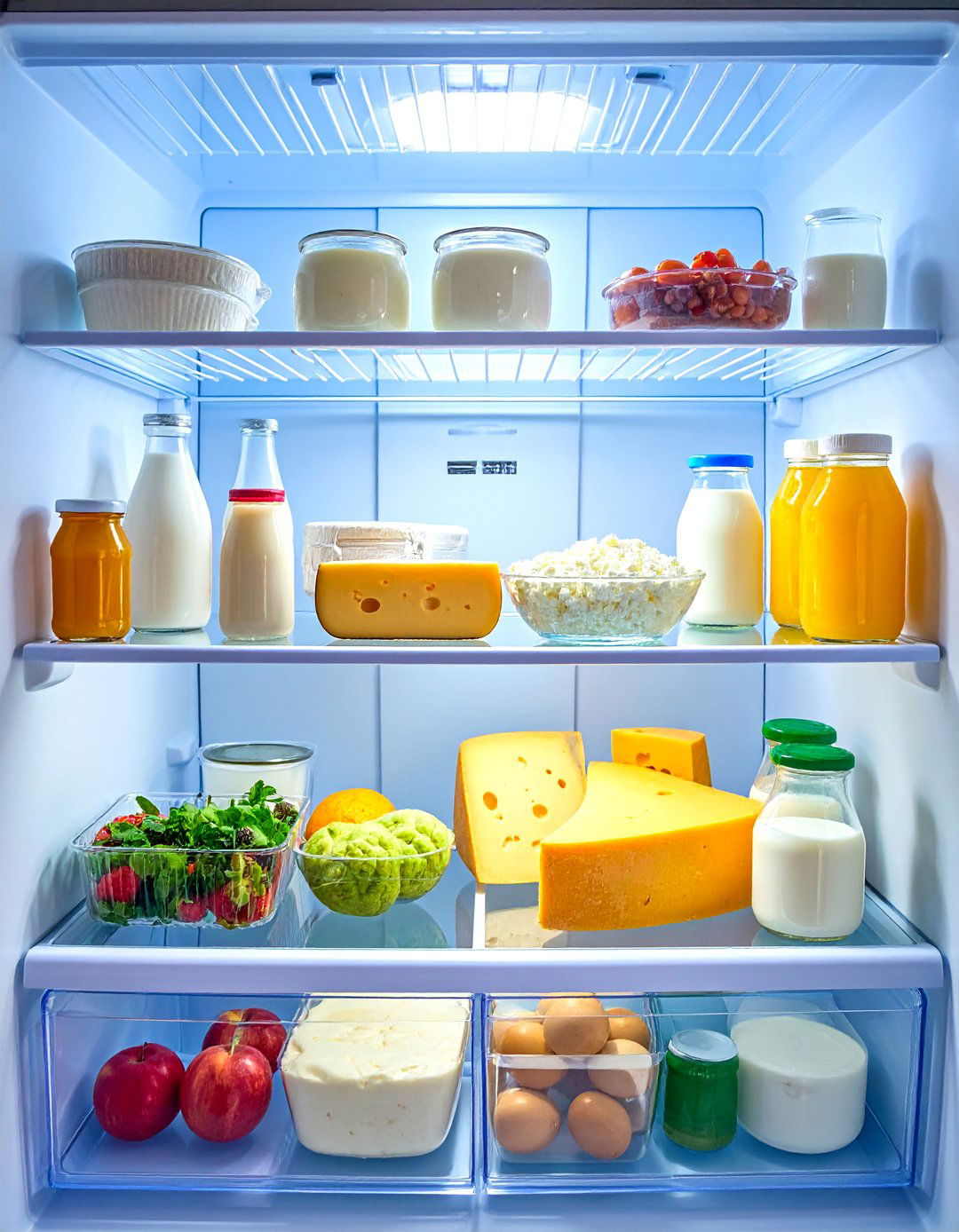
Creating dedicated dairy zones ensures these temperature-sensitive products stay fresh while remaining easily accessible for daily use. Group all dairy products together in the coldest part of your refrigerator for optimal storage conditions. Use containers that protect items from absorbing other food odors while allowing easy identification. Some dairy products benefit from specific storage orientations - store milk cartons upright and cheese in humidity-controlled containers. This organization helps monitor expiration dates and ensures older items get used first. Consider the different types of dairy your family uses and organize accordingly. Some families need extensive cheese storage while others focus on milk and yogurt organization. Proper dairy organization prevents waste of these often expensive ingredients. The grouped storage also makes grocery planning easier since you can see your dairy inventory at a glance. Why risk spoiled milk or moldy cheese when proper organization extends freshness and prevents waste?
20. Automated Inventory Systems
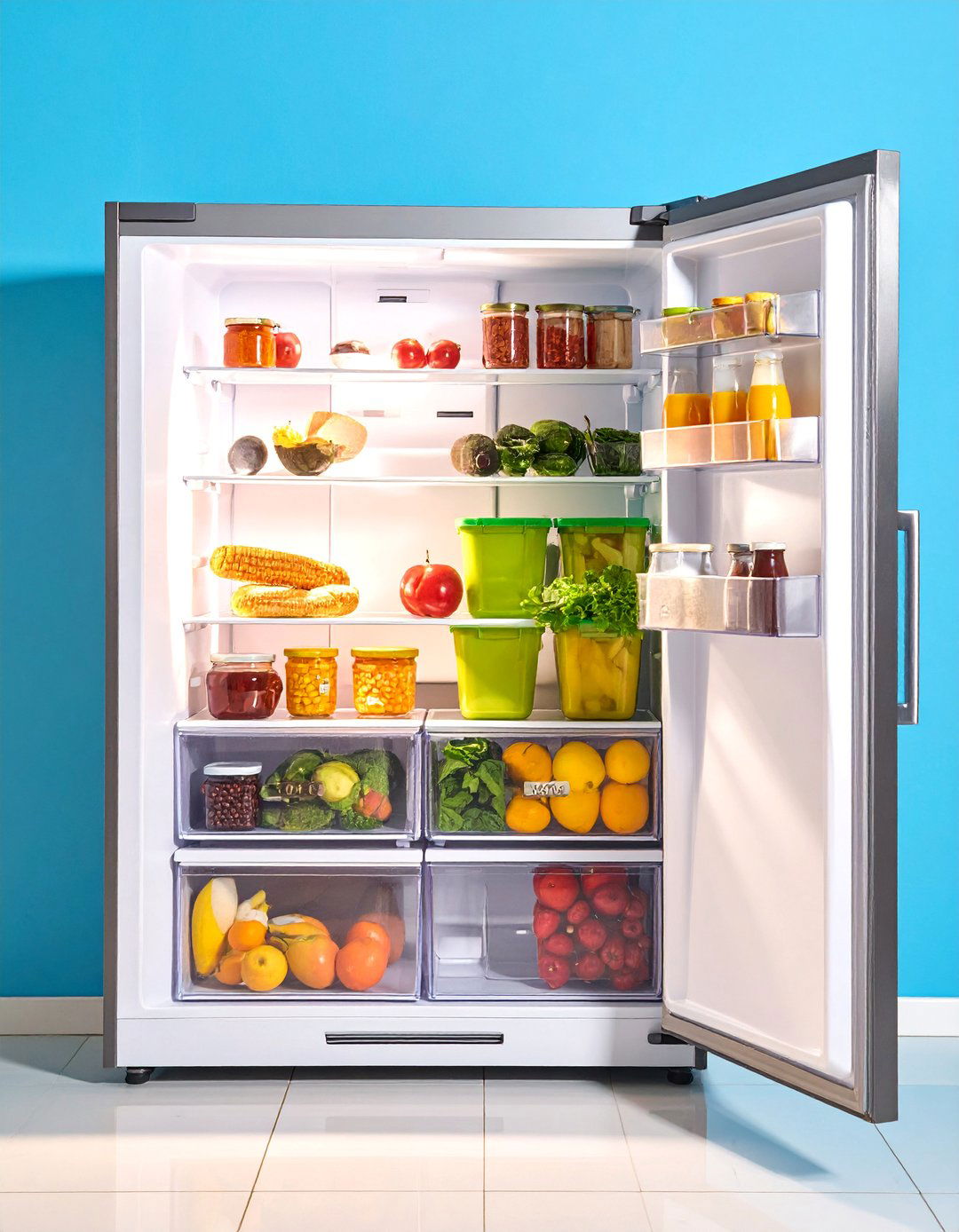
Smart storage solutions help track refrigerator contents and expiration dates without requiring constant manual monitoring. Some families use whiteboard systems mounted on refrigerator doors to track perishable items and their expiration dates. Apps and digital systems can send reminders about items approaching expiration. Physical inventory systems using charts or checklists help families stay aware of what they have and what they need. These systems prevent overbuying items you already have while ensuring you don't run out of essentials. Regular inventory reviews help identify patterns in food consumption and waste. Some storage containers include date tracking features or color-coded systems for easy monitoring. This organization approach supports both food safety and budget management by preventing waste. Modern families can choose from simple manual systems or sophisticated digital tracking based on their preferences and needs. What system would help your family stay better informed about refrigerator contents and expiration dates?
Conclusion:
Transforming your refrigerator from chaotic storage into an organized system dramatically improves your daily kitchen experience. These twenty organization ideas provide practical solutions for common storage challenges while helping preserve food freshness and prevent costly waste. The key lies in choosing systems that match your family's specific needs and maintaining them consistently. Start with one or two ideas that address your biggest frustrations, then gradually implement additional solutions as you develop new habits. Remember that the best organization system is one your entire family can understand and maintain. With proper planning and the right storage tools, your refrigerator can become a well-functioning appliance that supports healthy eating habits and streamlines meal preparation for years to come.

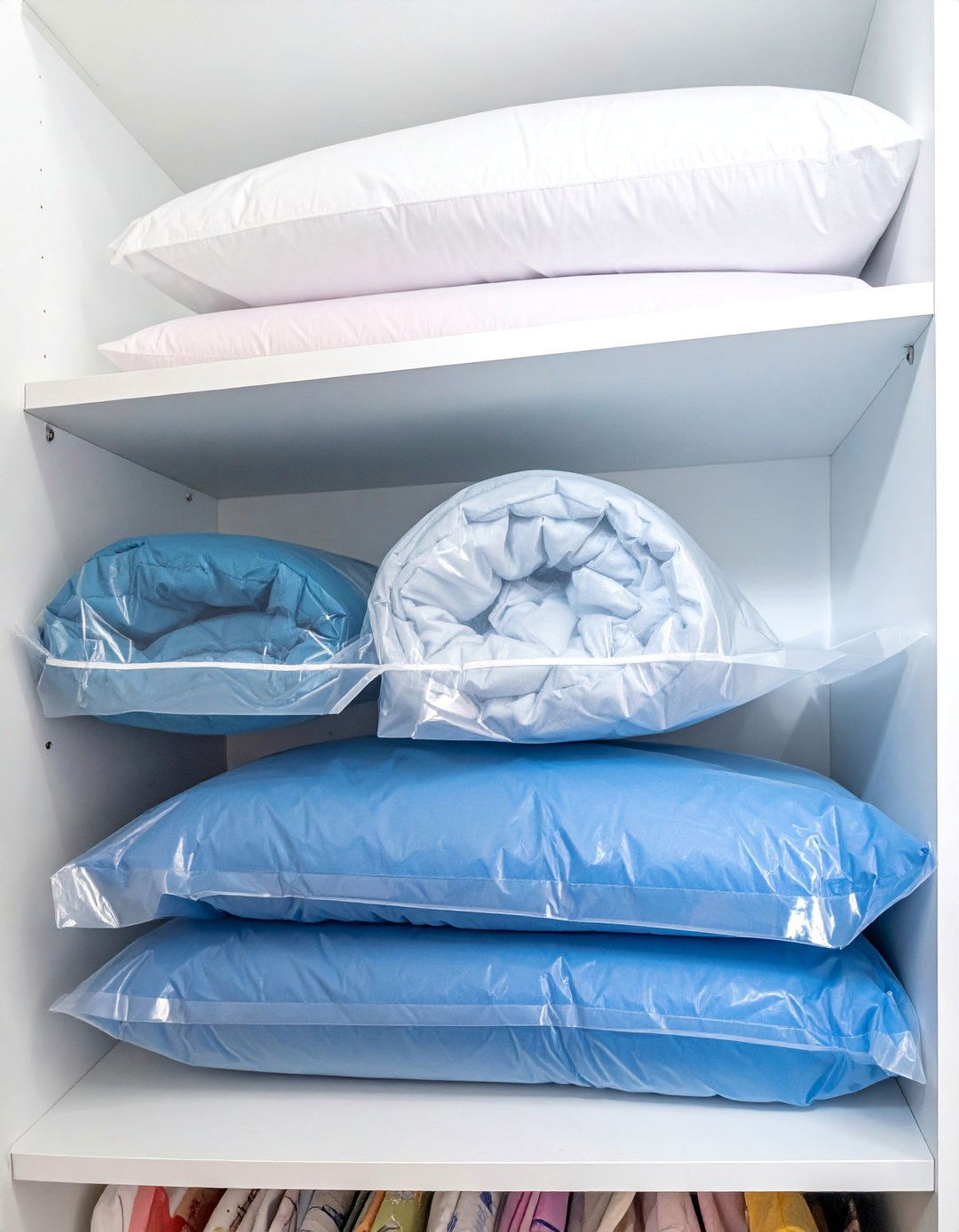



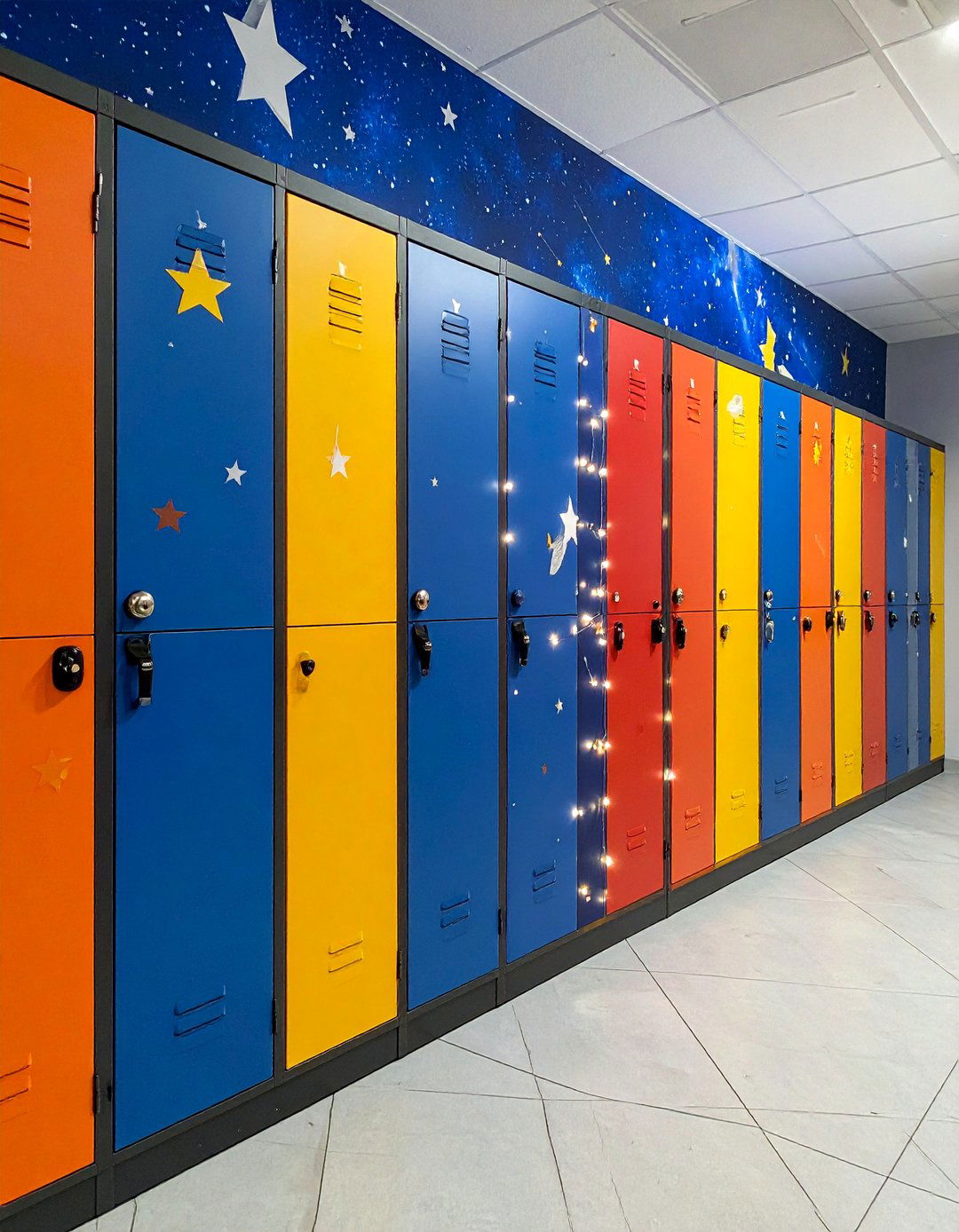
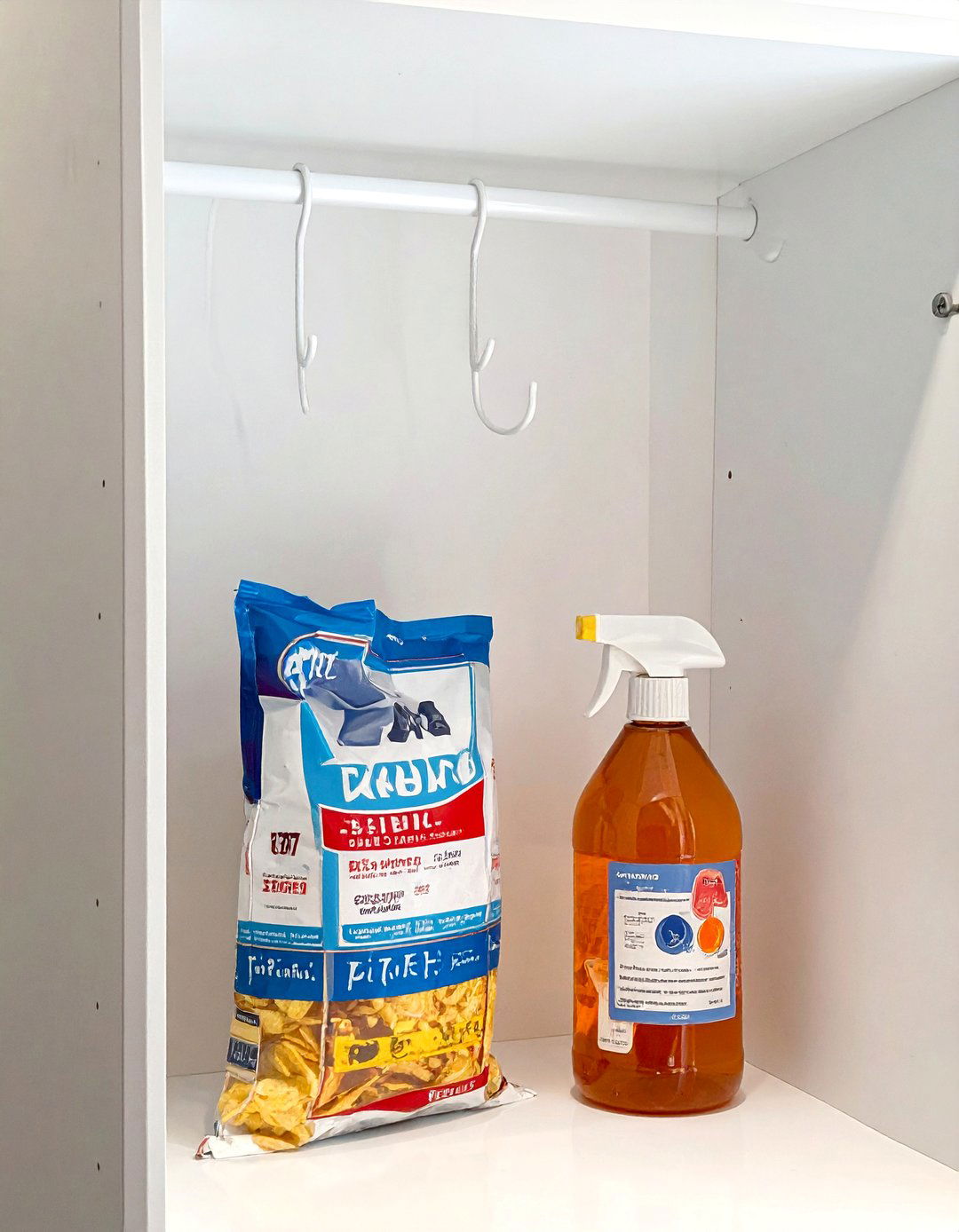

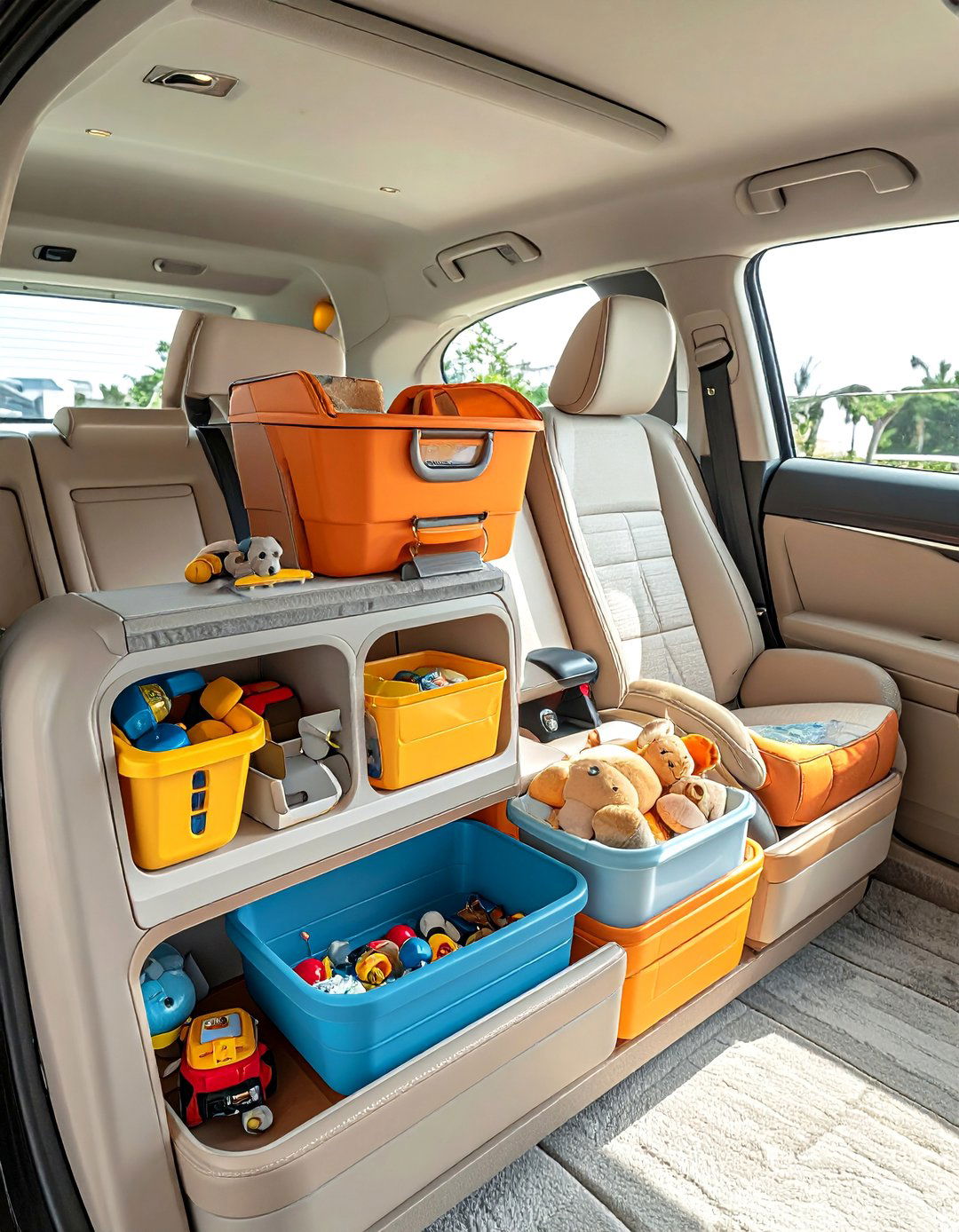
Leave a Reply